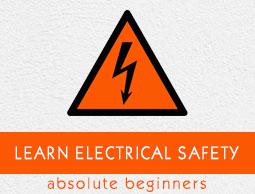Classification of Hazard-Prone Areas
The electrical apparatus may produce heat, arc and spark during normal and abnormal condition. This increases the risk of fire and explosion in the presence of flammable, combustible, ignitable gases, vapors, liquids, dust or fibres. A few locations have also been considered hazardous. As per NFPA 497 and NEC Article 500 and 501, the hazardous areas are classified into different categories. Let us learn about the different categories in our subsequent sections −
Class I Location
This location contains flammable gases, vapours or liquids, which create fire or explosion hazards. The practice for the classification of class I hazardous NFPA 497 (reference 2) provides locations.
Division 1
The ignitable concentrations of flammable gases, flammable liquid produced vapors or combustible liquid produced vapors exist in this location under normal operating conditions.
Division 2
The ignitable concentrations of flammable gases, flammable liquid produced vapors or combustible liquid produced vapors exist in this location under abnormal operating conditions.
Group Designation
There are four groups based on their physical properties −
- Group A − Acetylene
- Group B − Hydrogen
- Group C − Carbon Monoxide
- Group D − Gasoline
Class II Location
The fire or explosion hazards exist due to combustible dust in Class II location. NFPA 499 specifies electrical/electronic equipment for safe and proper installation in Class II location.
Division 1
The combustible dust is present in the air under a normal operating condition, which is sufficient to produce explosive mixtures. These are moderate to dense dust cloud, which form dust layer greater than 3.0mm.
Division 2
The combustible dust is present in the air under an abnormal operating condition, which is sufficient to produce an explosive mixture. These are not visible dust cloud, which form dust layer less than 3.0mm.
Group Designation
The combustible dust is grouped into three types based on their physical properties.
- Group E − Titanium
- Group F − Carbon Black
- Group G − Nylon Polymer
Class III Location
The fire or explosion hazards exist due to ignitable fibres in this location.
After the classification of hazardous area, the explosive atmospheres are divided into zones based on the frequency and persistence of the potentially explosive atmosphere.
For gas, vapor and mist -
Zone 0
This explosive atmosphere consists of a mixture with air of dangerous substances in the form of gas, vapor or mist continuously or for long periods or at intervals.
Zone 1
A mixture with air of dangerous substances in the form of gas, vapor or mist is present occasionally in normal operation in this categorized atmosphere.
Zone 2
The mixture of dangerous substances is present in the form of gas, vapor or mist and persists for a short period only.
For dust -
Zone 20
This atmosphere consists of explosive materials in the form of a cloud of combustible dust in the air continuously, or for long periods or at intervals.
Zone 21
There is explosive combustible dust in the form of a cloud in the air in normal operation occasionally.
Zone 22
Explosive combustible dust is present in the form of a cloud in the air and persists for a short period.
Characteristics of hazard-prone areas
Let us now see the characteristics of hazard-prone areas. The characteristics are as follows −
Properties of dangerous substances
It includes the boiling point and flash point of any flammable liquid, gas or vapors, which may be lighter or heavier than air.
Size of potential release
This is the consequence of wrong circumstances where rapid rescue is dangerous. For example, LPG cylinder or cartridge.
Temperature and pressure
When some substances do not form explosion without any heat and pressure.
Ventilation
Proper ventilation can prevent the fire and explosion.
Choice of electrical apparatus for use
The equipment is constructed as per the standards to be prevented from being a source of ignition. These are categorized as 1, 2 and 3 depending on the level of the zone according to the suitability of application. The mechanical equipment is not certified for use in the hazardous area. If the categorized equipment is not available, then lower category can be used combining with other protective measures.
Questions
1. Which flammable materials exist in location III?
Ans: a
The place where combustible dust in the form of a cloud in the air is present in normal
operation is known as______.
a) Zone 0
b) Zone 21
c) Zone 2
d) Zone 22
Ans: b
3. Which one is not characteristics of the explosive atmosphere are?
a) Size of potential release −
b) Ventilation −
c) Population
d) Temperature and pressure −
Ans: c


